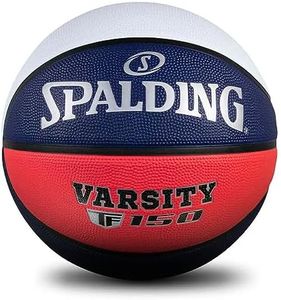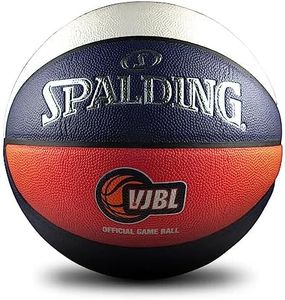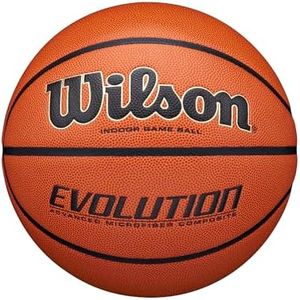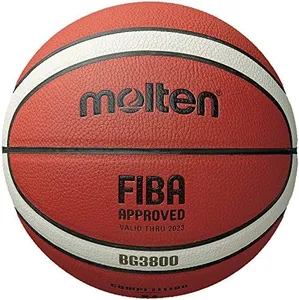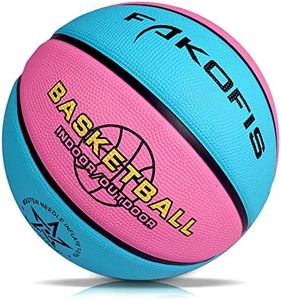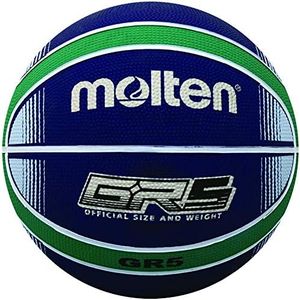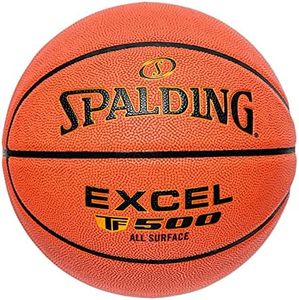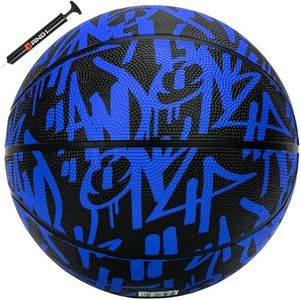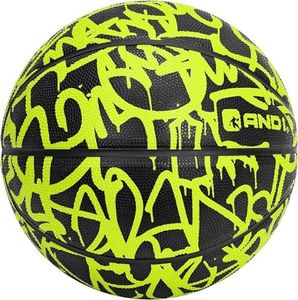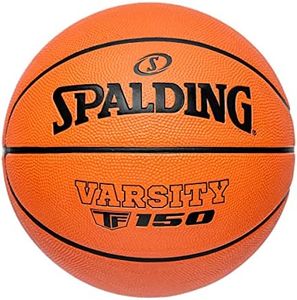We Use CookiesWe use cookies to enhance the security, performance,
functionality and for analytical and promotional activities. By continuing to browse this site you
are agreeing to our privacy policy
10 Best Youth Basketballs
From leading brands and best sellers available on the web.Buying Guide for the Best Youth Basketballs
Choosing the right youth basketball is essential for helping young players enjoy the game, develop their skills, and play safely. It's important to look for features that match the player's age, skill level, and intended use of the ball—whether for casual fun, practice, or organized games. Knowing what to look for can make finding the perfect ball much easier and more rewarding for a young athlete.Ball SizeBall size refers to the circumference of the basketball and is crucial because it helps ensure that young players can properly grip, dribble, and shoot the ball. Youth basketballs come in different sizes, commonly Size 5 (27.5 inch) for children aged 9–11 and Size 6 (28.5 inch) for ages 12–14. Using the right size makes it easier for kids to handle the ball and develop good technique, so always choose according to the player's age and league guidelines.
Ball WeightBall weight goes hand-in-hand with ball size and affects how easy it is for a child to control and shoot the ball. Lighter balls are recommended for younger children as they reduce the risk of strain and allow for better learning. As children grow and get stronger, they can move to standard-weight balls for their age group. Always check that the ball weight matches the recommended standards for your child's age and hands-on comfort.
MaterialThe material of a basketball can affect grip, durability, and feel. Common options include rubber, composite leather, and genuine leather. Rubber balls are more affordable and ideal for outdoor use or beginners because they handle rough surfaces well. Composite leather feels more like a professional game ball and works both outdoors and indoors, making it a versatile option for serious learners. Genuine leather is rare for youth balls and best for indoor play, but can be hard to break in. Consider where the ball will mostly be used—if mostly outdoors, choose rubber; if indoors or a balance of both, composite leather is a solid choice.
Grip and TextureGrip and texture are about how easy it is to hold onto and control the ball. Balls with deeper channels (the grooves on the surface) and pebbled texture provide a better grip, which is important for kids as their hands are smaller and may not be as strong. For beginners or those developing skills, look for a ball with noticeable grip and texture; for more advanced youth players, medium texture may suffice as their handling skills improve.
Intended SurfaceWhere the basketball will be used most often matters because certain balls are designed for specific surfaces. Some balls are labeled 'indoor,' 'outdoor,' or 'indoor/outdoor.' Outdoor balls are built to withstand rough, abrasive surfaces like asphalt and concrete, while indoor balls are optimized for wooden gym floors, offering better bounce and feel. If your player practices in different settings, an indoor/outdoor ball gives the most flexibility. Always pick a ball intended for the main place the game will be played.
